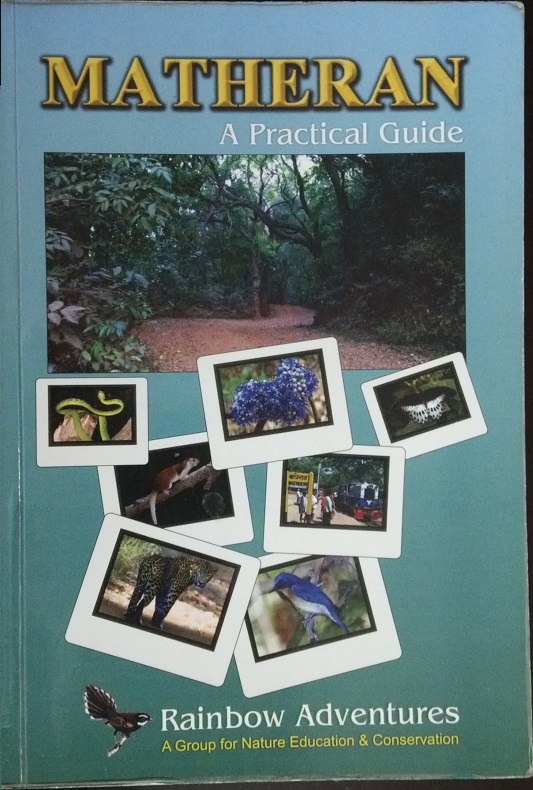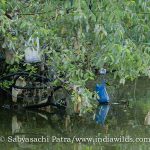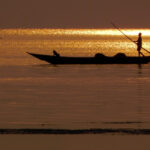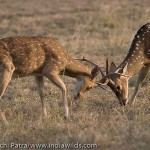Matheran – A Practical Guide
I was filming a documentary before sunrise at Sewri near Mumbai when Yogesh Chavan, one of the authors of “Matheran – A Practical Guide”, met me and presented me a copy of the book. Matheran is an ecosensitive zone with a lot of interesting flora and fauna so I was curious to see what was covered in this book. Since I have been to Matheran a long time ago, I was interested to read it. After more than a month I could find time to read it in leisure and found that it is filled with interesting information.
The “Matheran – A Practical Guide” is written like a typical book about a hill station which tourists will appreciate. It traces the history of Matheran, describes various points of Matheran, the places of interest etc.

Matheran – A practical guide
This book also contains checklists of flora and fauna. The images of various species of birds, mammals, butterflies, insects, arachnids, fishes and flowers differentiates this from other guide books. The scientific names of various flower species along with their common names, flowering month and place would easily help people to try and reach those places to find those species. This makes the book valuable. Also, since it records the month of flowering, any significant deviation either due to climate change or other reasons would be easily noticed.
The topics on Matheran’s discovery and history, chronological order of its conversion into a hill station, personalities of Matheran etc could have been bunched together. Similarly topics on how to visit Matheran and best seasons could have been at one place to make the information more intuitive to find.
There is a chapter on the book about an encounter with a leopard and its dog kill. This chapter is written in a blog post style and different than the overall style of the book. However, since the year of leopard sighting has been mentioned, it serves as a record about the presence of this megafauna.
This book also provides the list of hotels with their contact details and public transport timings, so it would be of help to tourists.
India is so vast, that insisting on scientific documentation of places by trained personnel is never going to materialise. So books like this should be encouraged as the visits by enthusiasts, like the authors of this book (Shailendra Patil, Sunil Patil and Yogesh Chavan), help in some documentation of our ecologically fragile places.
Published by Rainbow adventures, this book is priced at Rs. 380.
- GoPro Hero 12 Black - 6 September,2023
- Leopards: The Last Stand - 2 July,2023
- Drifting in the Waters of Sundarbans - 26 March,2023












